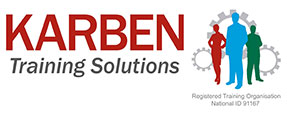FIRST AID ESSENTIALS
MANAGING AN EMERGENCY
Priorities in an emergency
In any emergency situation, early recognition is a key step in initiating early management. In all emergencies, the rescuer should:
- Quickly assess the situation
- Ensure safety for the rescuer, person in need and bystanders (this may mean moving the person in need)
- Send for help (call an ambulance).
If the person is unresponsive and not breathing normally, follow DRSABCD.
Where more than one person requires attention, the care of an unconscious person has priority.
Management
General principles of management
After ensuring safety for the person in need, rescuer and bystanders and sending for help, the management of the collapsed or injured person involves:
- Prevention of further harm or injury
- Checking response to verbal and tactile stimuli (“talk and touch”)
- Care of airway, and breathing
- Control of bleeding (ANZCOR Guideline 9.1.1)
- Checking for physical (eg. alert jewellery) or electronic alert devices (eg. smartphone application) that may be relevant to assessment or management
- Protection from the weather
- Other first aid measures depending on the circumstances
- Gentle handling
- Reassurance
- Continued observation.
Moving a person in need
The condition of a collapsed or injured person may be made worse by movement, increasing pain, injury, blood loss and shock. However, a person lying in a hazardous area, for example on a road or railway, may need to be moved to ensure safety.
A rescuer should move a person when needed to:
- Ensure the safety of both rescuer and the person in need
- Protect from extreme weather conditions
- Enable evacuation from difficult terrain
- Enable the care of airway and breathing (e.g. turning the unconscious breathing person onto the side or turning a collapsed person onto their back to perform cardiopulmonary resuscitation)
- Enable the control of severe bleeding.
ANZCOR suggests that an unresponsive person who is breathing normally is positioned into a lateral, side-lying recovery (lateral recumbent) position, also known as the recovery position, as opposed to leaving them supine.
It is reasonable to roll a face-down unresponsive person onto their back to assess airway and breathing and initiate resuscitation. Concern for protecting the neck should not hinder the evaluation process or life saving procedures.
Ideally, the most experienced rescuer should take charge and stay with the person in need while another rescuer is sent to seek help. If movement is necessary and help is available, the rescuer in charge should explain clearly and simply the method of movement to the assistants, and to the person in need if they are conscious.
When ready to move the person in need:
- Avoid bending or twisting the person’s neck and back: a spinal injury (ANZCOR Guideline 9.1.6) can be aggravated by rough handling
- Try to have three or more people to assist in the support of the head and neck, the chest, the pelvis and limbs while moving the person. A spine board may be used if available
- A single rescuer may need to drag the person. Either an ankle drag or arm-shoulder drag is acceptable
- Make prompt arrangements for transport by ambulance to hospital.
Specific management of a person in need at a Road Accident
Approach with caution and make the accident scene as safe as possible.
- Do not touch a vehicle, or attempt to rescue a person from within ten metres of a fallen power line unless an appropriate electrical authority has declared the area safe.
- Use hazard lights, road triangles, or torches to warn oncoming traffic of the accident scene. Bystanders may also be used where it is safe to do so.
- Turn off the ignition of a crashed vehicle and activate the park brake. If unable to activate the park brake, place a chock under a wheel. Be cautious that airbags that have not deployed may activate following a crash.
- Remove a motorbike helmet from a person if it is necessary to manage the airway, assist breathing or control bleeding.
- If an unconscious breathing person can be managed within the vehicle, do not remove them from the vehicle unless there is a threat to life. Clear the airway of foreign material; maintain head tilt and jaw support and continuously reassess the airway and breathing.
- If the person in the vehicle is unconscious and not breathing normally despite opening the airway, remove the person from the vehicle if possible and commence CPR immediately following the ANZCOR Basic Life Support Flowchart (ANZCOR Guideline 8).
